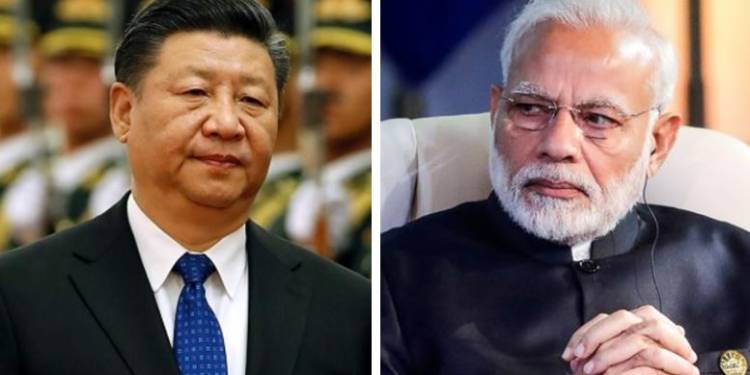India and China are currently locked in a military stand-off situation in Eastern Ladakh, and extensive talks are happening at military and diplomatic levels between the two countries.
Meanwhile, a massive breakthrough has come India’s way as the 1960 border talks between India and China reveal that Chinese claims in the Galwan Valley are unsubstantiated. This was also the site of a violent face-off between the Indian Army and the Chinese People’s Liberation Army (PLA) troops last week. The face-off led to 20 casualties on the Indian side and many more deaths on the Chinese side.
But it is now proven that Chinese aggression and claims in the region are wholly illegal and opposed to Beijing’s earlier claims themselves. During the 1960 border talks, China had stated that its claim line crossed the Galwan River at Longitude 78° 13’ E, Latitude 34. 46’ N Co-ordinates.
Actually, these Co-ordinates fall far short of what China calls the ‘estuary’, and is known as the Y-Nala or Y-junction to the Indian forces. This is the confluence of Rivers Galwan and Shyok. As a matter of fact, the Co-ordinates that China had shown in the year 1960 also fall short of the Patrolling Point 14 (PP-14) near which a deadly clash happened between the Armies of the two countries.
The border talks between India and China in 1960 were led by Joint Secretary (East) Jagat Singh Mehta with assistance from the head of history division, Dr. S Gopal. China had given the aforementioned Co-ordinates after being asked by the Indian delegation.
The border talks had failed, but China occupied the Indian territory up to its claim line anyway during the 1962 Sino-India war. The point up to which the Chinese forces reached came to be known as the Line of Actual Control (LAC). The LAC and the Chinese claim line are thus conterminous in the Galwan Valley area.
As per the Chinese claim in 1960 itself, India has control of an area up to a few kilometres to the East of the Y-junction or the ‘Estuary’ as the Chinese call it. This area includes the ridges where Patrolling Points 14, 15 and 17 are situated.
China however went beyond its own claim line because it was concerned by India’s ongoing plans to construct a network of feeder roads to connect the 255-km long, strategically crucial Darbuk–Shyok-DBO (DSDBO) Road, inaugurated by Defence Minister Rajnath Singh last year.
China was particularly bothered by a 7.5-kilometer-long bridge over the Galwan nallah that India has built regardless of Beijing’s objections.
India’s road construction activity on its own territory is strategic as is the only point of access for New Delhi into the Ladakhi territory occupied by China, Aksai Chin.
Beijing’s actions in the Galwan Valley region have been typical of its Salami Slicing strategy that denotes territorial expansion in the South China Sea and the Himalayan regions.
After the violent face-off on June 15, the Chinese Foreign Ministry is claiming sovereignty over the entire Galwan Valley region in a fresh bid to strengthen its position in what it calls Aksai Chin (China occupied Ladakh).
China wants to restrict India’s access to the East of the ‘Estuary’ and has expanded its own claim line in contradiction to the co-ordinates given in 1960. This is unacceptable to India as the DSDBO road runs on an alignment to the east of the Shyok River into which the Galwan flows.
China wanted to infiltrate into the effective Indian territory- an attempt that was blocked at Patrolling Point-14 during the deadly skirmish last week. Later, the Chinese Foreign Ministry wanted to threaten India against patrols crossing the Galwan ‘Estuary’, and that too has been rejected by an assertive New Delhi.
India is clear in its intent- China’s Salami Slicing tactics won’t work at the strategically located Galwan Valley. And India now has access to the old co-ordinates given by China that shatter Beijing’s claims of possessing sovereignty over the entire Galwan Valley.
